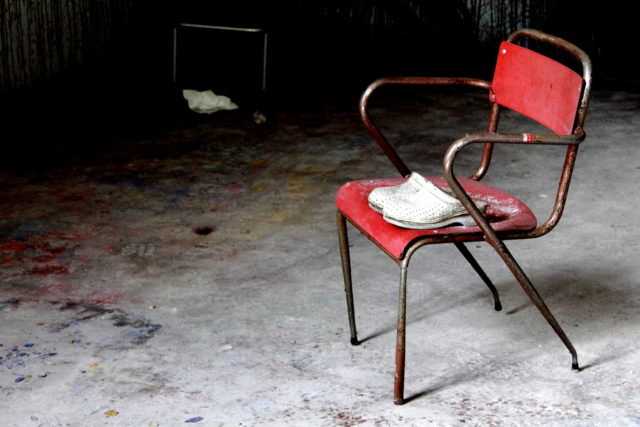The Mombello Psychiatric Hospital, located in the province of Monza and Brianza, covered 430,000 square feet and was one of the last asylums to be shut down following the Legge Basaglia.
Italy’s largest asylum was so huge that it bore more resemblance to a small village than a medical institution.
The Mombello Hospital, also known as the Guiseppe Antonini Hospital after one of its directors, was not built from scratch but was an earlier building that was adapted to become a medical institution. The original building was known as Villa Pusteria and had once been Bonaparte’s headquarters during his Italian campaigns.
In the mid-1800s, cholera was widespread and there was great pressure on existing psychiatric hospitals. As a result, it was decided that a new hospital needed to be created. The villa had been abandoned in the early 1800s so, in 1863, the municipality of Milan bought it and set about turning it into a hospital.
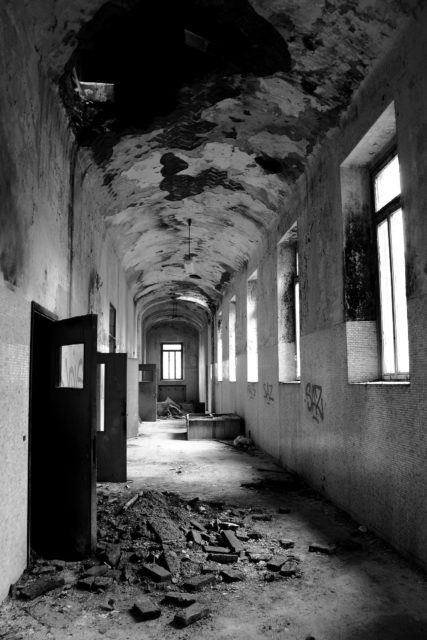
Villa Pusteria had originally been designed by architect Francesco Croce in 1754 in a medieval style. When the building was converted into a hospital, the principles of Philippe Pinel were followed, which favored the design of a small village.
Gardens and plots suitable for agriculture were included, all enclosed by a perimeter wall three meters (almost ten feet) high.
Mombellow was designed to house less violent patients and those who would benefit from peace and quiet.
The renovation works took place from 1873 to 1878, but 60 patients had already been transferred there in August 1865 due to critical overcrowding in other institutions. By October 1867, Mombello had around 300 patients, equally split between men and women.
Patients were divided into one of four categories: The Quiet Ones, The Filthy Ones, The Workers, and The Agitated Ones. Those people who fell into the last category were kept in isolation while the others were free to wander the grounds and were required to take part in “therapeutic” work.
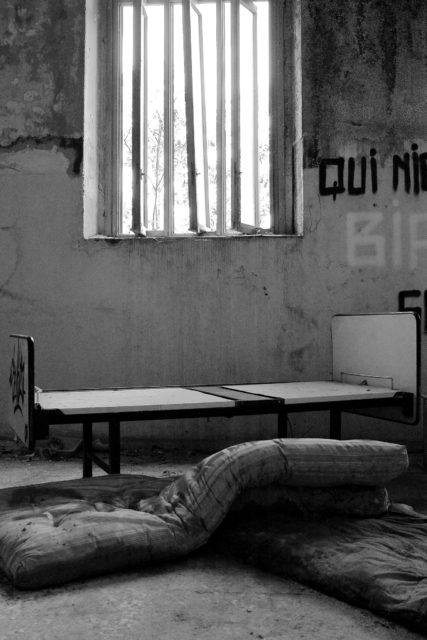
As well as accommodation for patients, the hospital complex included laboratories and a medical library for the staff while the patients could enjoy gardens, craft shops, and sewing rooms.
When Edoardo Gonzales became director, he built an aqueduct to bring fresh water not only to the hospital but also to the nearby town of Limbiate.
In addition, he introduced theatre and dancing for the benefit of the patients and created a children’s department.
Between 1880 and 1905, the hospital even produced its own newspaper which was distributed to interested individuals and detailed admissions, fatalities, and discharges.

In 1908, four pavilions were opened with 100 beds each and no boundary walls. When the First World War broke out, two of the pavilions were repurposed to take soldiers from the front. Just like the other patients, the soldiers were given a strict diet and alternated rest periods with work around the grounds.
One of the pavilions also housed mental patients from Venice who had been displaced by the war. This happened again in the Second World War and also during floods in Polesine in 1951.
During WWI, the population of Mombello Hospital reached a peak of over 3,000 patients and became as overcrowded as those institutions it had been built to alleviate.
It was in 1911 that Guiseppe Antonini Hospital became director, the man whose name would come to be associated with the hospital.
Mombello Hospital was still well-regarded in the second half of the 19th century and hosted not only doctors but also artists. During its time, several notable doctors worked at the hospital. They included Ugo Cerletti who invented electroconvulsive therapy and practiced his new technique on some of the Mombello patients.
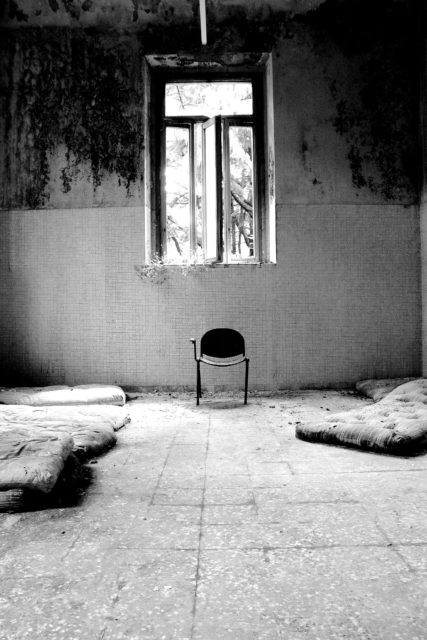
Like many other asylums, Law 180 which reformed mental health care in Italy brought an end to Mombello Hospital. Despite being officially closed in 1978, it took until 1999 for every long-term patient to be discharged or reassigned and for the whole site to be vacated.
Due to Cerletti’s experiments and the fact that there was a whole wing devoted to “agitated” patients, it’s unsurprising that today many rumors and legends are connected with the site.
After the hospital was abandoned and started being reclaimed by nature, it’s easy to see how imaginations could run riot in a place like this.
One legend states that there are service tunnels running beneath the property which are said to include a secret passageway built by Napoleon to allow him to escape if the villa was besieged.
It is also said that that Benito Albino Bernardi, the illegitimate son of Benito Mussolini with Ida Dalser, was housed in the agitated ward and perished in mysterious circumstances.
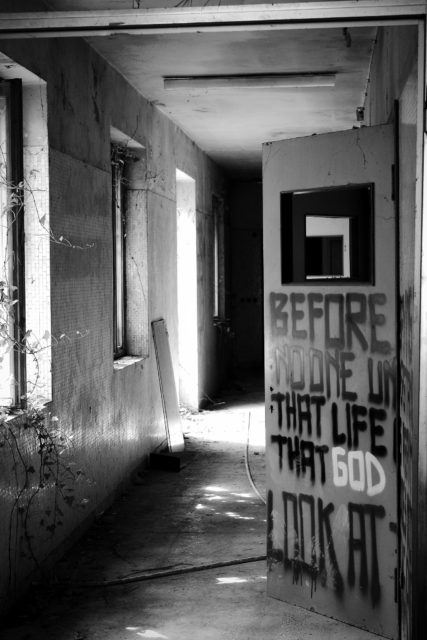
Today, most of the complex is in ruins, taken part by vandals and looters. Some of the buildings do continue to be used, however, variously as a training center for doctors and nurses, an agricultural institute, and a halfway house for those with mental health problems.
The abandoned hospital was also used in part of the movie 7 Days, 7 Girls starring Johnny Depp.
The site proves a draw for urban explorers and photographers. Although the buildings are pretty accessible, urban explorer articles warn visitors that the ground is littered with debris and that both homeless people and drug addicts have made this place their base so visitors should go well-prepared.
William Montanaro is the photographer who kindly gave us his permission to share his beautiful black and white photographs of the abandoned Mombello Psychiatric Hospital. Check out his Flickr account via this link to find more of his photographs.
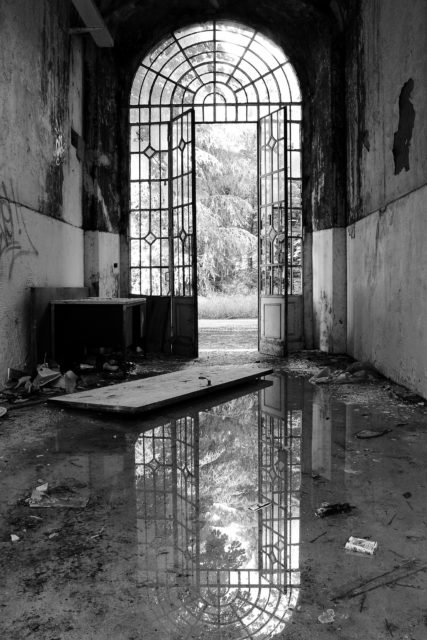
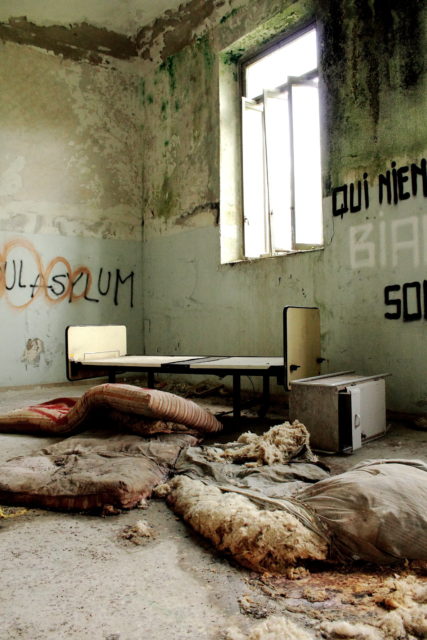
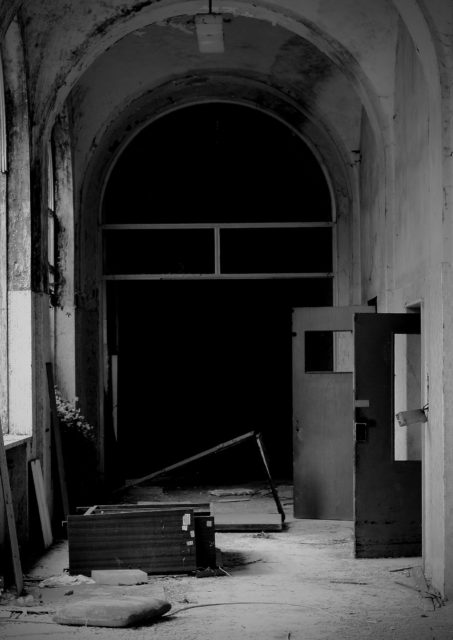
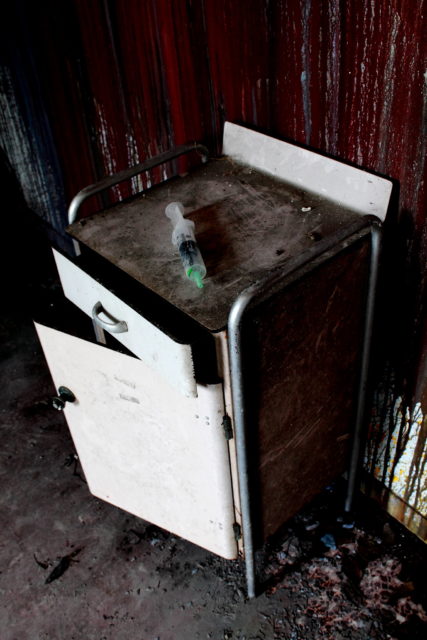
The Steam Train Graveyard: Used to be a secret location should war break out

